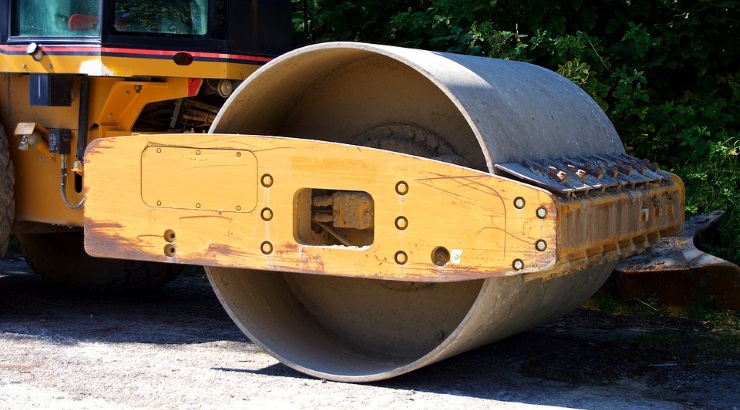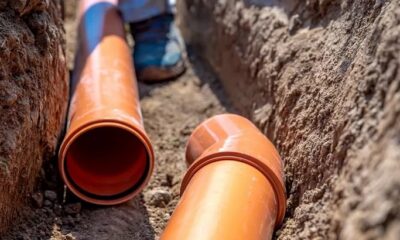Features
5 Major Steps to Road Construction
A quick review of the typical steps involved in construction of a road.

Construction of a road involves the meticulous installation of soil stabilizers, asphalt, concrete, and an array of other materials on a defined path.
This intricate process includes paving, rehabilitation, and/or reclamation of degraded pavements, resulting in the creation of a motorable roadway.
Construction of road can be a complex venture that requires months or even years of planning, depending on the size and type of the envisioned road.
Steps in road construction
While road construction methods vary according to the type of road being built, the following is a step-by-step guide based on using asphalt and/or concrete.
1. Planning
Road construction usually begins with planning.
This involves assessing the current and future traffic patterns and performing a cost-benefit study to ensure the road will serve its purpose.
Layout drawings, funding, legal, and environmental issues are all sorted out during this initial stage of road construction to ensure the project runs smoothly without running into financial or legal problems.
2. Setting Out
Setting out refers to the process of transferring design proposals from drawings to the ground. It demarcates site boundaries, foundations, and other necessary structural parts.
In most road construction projects, a series of boards is placed at intervals along the proposed line of the road. A profile board with a fixed height, often referred to as a ‘traveller’, is deployed to control the excavated levels between the profile boards.
The traveller is positioned in the sight line between two level boards to ensure visibility before and after excavation, aiding the adjustment of levels accordingly.
Like in any other construction project, the level of the profile board is measured using a line level – a short spirit level suspended on a nylon string.
The string is moved up or down until the bubble is centred.
3. Earthworks
Earthworks, the most labour-intensive procedure in road construction, involves the deployment of a grader on-site to remove the topsoil.
The site is then scraped and graded to expose the underlying ground, known as formation level.
This is the level at which excavation ceases and construction on the road starts.
The soil below the formation level (subgrade) should be tested for strength before excavation. If subsoil quality is poor, removal or stabilization may be required.
If the cost of excavation is deemed high, sand wicks and sand drains can be applied. Sand wicks are sand-filled boreholes underneath the road embankment.
RELATED: Road Curve Design and Construction
These systems offer greater stability to the soil by reducing the length that water travels in a drainage path to disintegrate water pressure.
On the other hand, sand drains are used to capture groundwater, addressing pavement and verge leakage from higher ground and water table fluctuations.
Reinforcing the subgrade through soil stabilization with chemicals, cement, or bituminous materials is essential for pavement thickness.
This involves removing poor material and replacing it with selected fill to ensure adequate subsoil drainage and compacting the subgrade to a high dry density.
To prevent subgrade moisture weakening, covering it with a medium-gauge plastic sheet or applying a bituminous binder with sand topping is advised.
4. Paving
Paving begins once the subgrade has been prepared and drainage systems fitted. Depending on the project’s requirements, paving can be either rigid or flexible.
RELATED: How Much for Concrete Driveway?
Rigid pavements offer higher flexural strength and longer design life with lower maintenance costs. On the other hand, flexible pavements expand and contract with temperature fluctuations, eliminating the need for expansion joints.
i.) Rigid paving
This consists of a reinforced or unreinforced in situ concrete slab placed over a thin granular base course. The inflexibility and strength of rigid pavements enable the loads and pressures to be dispersed over a wide area of the subgrade to reduce the potential impact.
What layers are needed to build a road?
From top to bottom, rigid paving is made up of these layers:
- Subgrade (existing soil).
- Subbase course of crushed stone with a thickness of 60 cm.
- Lubricous sheath made of polythene sheeting.
- Insitu concrete paving slab, which can be reinforced using steel fabric or re-bar.
- Asphalt or similar topping as necessary.
Rigid pavements do not have the capacity to expand and contract due to changes in temperature and moisture changes.
Traverse and longitudinal joints are fitted between slabs to prevent cracking that happens as a result of restrained deformations caused by temperature and moisture variations.
The spacing of the joints is usually determined by the temperature at which the concrete is laid, the thickness of the slab, expected traffic load, and the presence or absence of slab reinforcement.
ii.) Flexible paving
Flexible pavements are made of several layers of asphalt or bituminous material overlying the ready subgrade to which all the traffic loads are distributed.
They are called “flexible’ because the entire pavement structure bends or deflects when subjected to traffic loads.
The thickness of every individual layer must have the capacity to distribute loads to avert permanent deformation of the road surface.
In flexible paving, the subgrade is compressed with the sub-base on top.
The subbase layer is usually made of crushed stone or dry lean concrete that is laid and compressed by a road roller machine.
The subbase should not exceed 15 cm and is usually placed once waterproofing is completed.
Above the subbase is the surfacing layer, which consists of the base layer and the wearing course. The wearing layer is the topmost layer of bituminous material and is often thicker and stronger than the base layer.
Its thickness depends on the material requirements and the anticipated traffic loads.
Common materials used for the wearing course include porous asphalt, hot rolled asphalt, dense bitumen tar macadam, and dense bitumen macadam.
On the other hand, the sub layer is usually at least 6 cm thick and is made up of dense bitumen macadam or asphalt. It is applied with the suitable cross falls and gradients.
5. Quality control
After a road surface has been put in place, a series of quality tests must be performed before the road construction project can be deemed complete.
This procedure involves checking to confirm drainage, grading levels and other aspects of the road are satisfactory.
Once all the checks return positive results, the road can now be opened for use by motorists. Most roads can last for up to 40 years – with major upgrade works due every decade or so.












